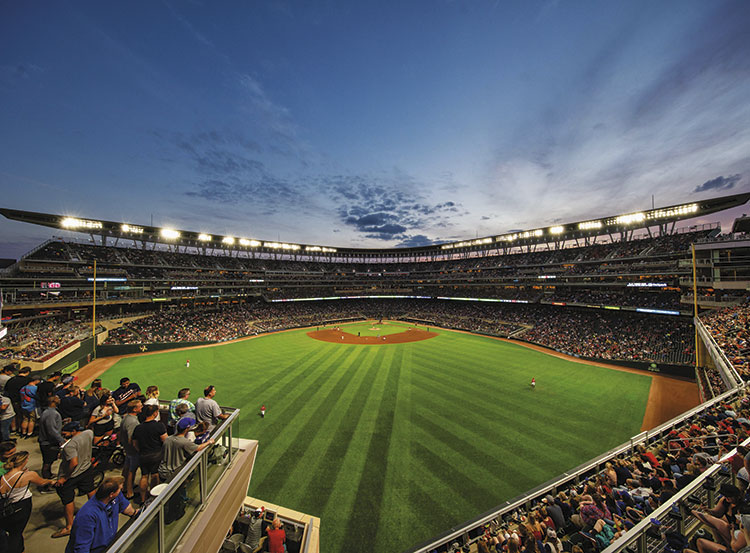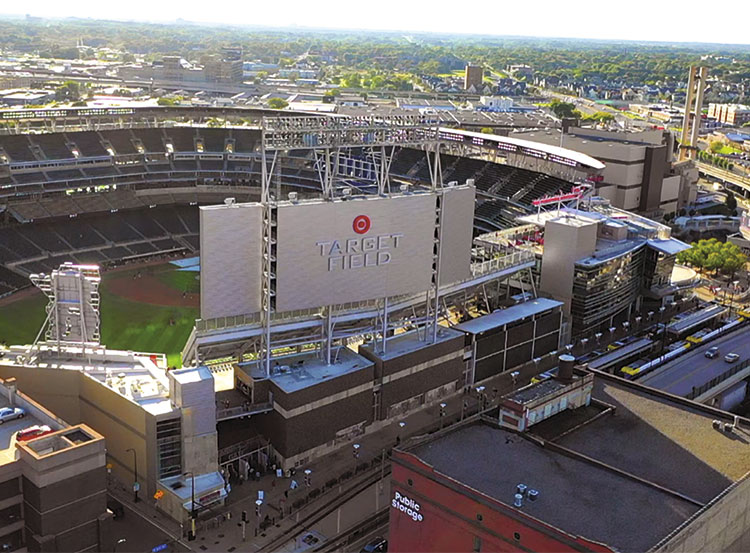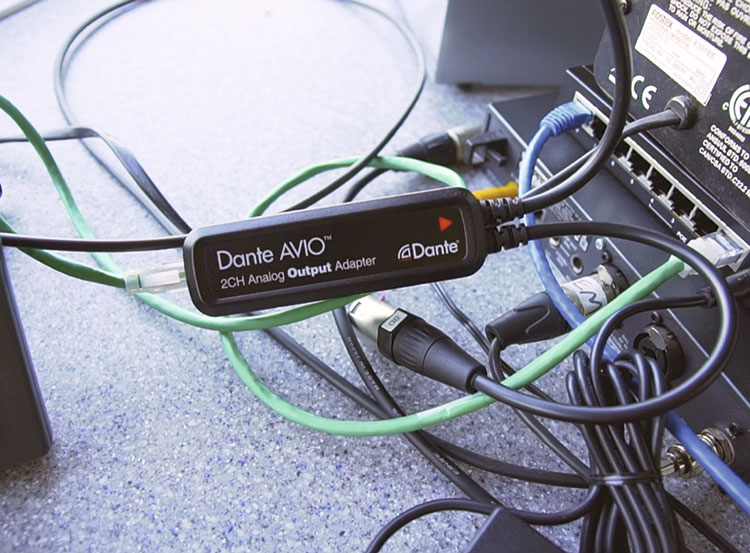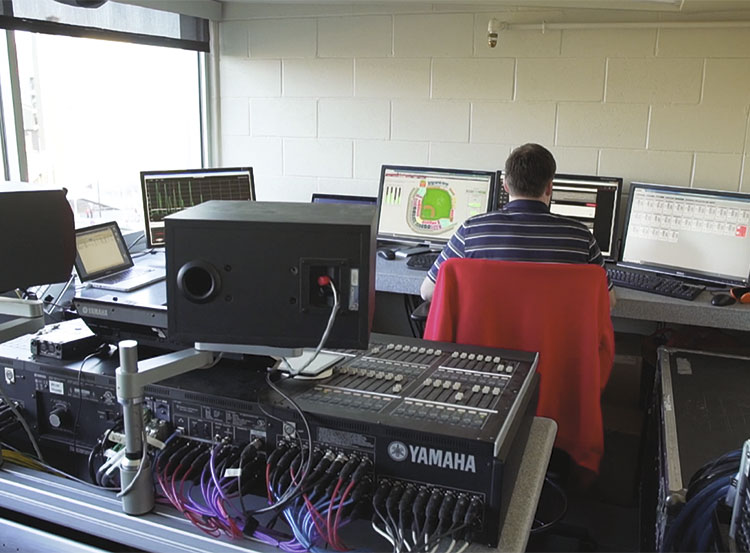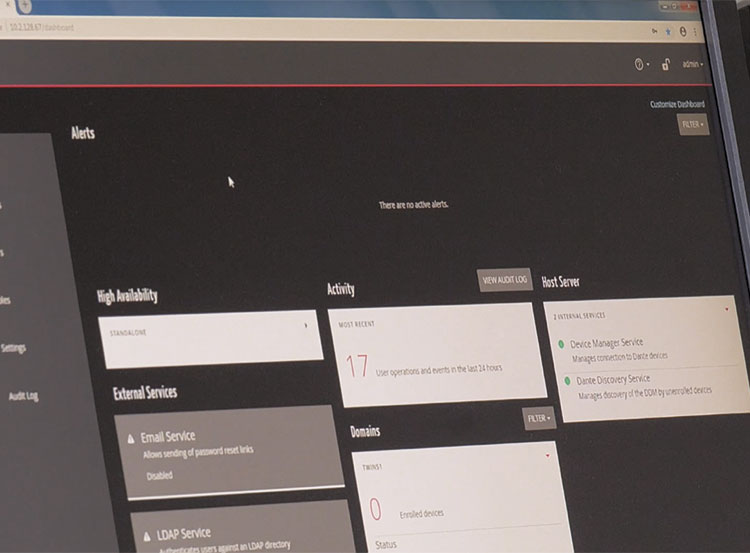This website uses cookies so that we can provide you with the best user experience possible. Cookie information is stored in your browser and performs functions such as recognising you when you return to our website and helping our team to understand which sections of the website you find most interesting and useful.
EMEA & APAC AWARDS • THE AMERICAS AWARDS
Target Field
Sitting in the heart of downtown Minneapolis, Target Field represents Minnesota’s dynamic blend of urban sophistication and outdoor vitality. Built in 2010, the Major League Baseball stadium is home to the Minnesota Twins, with a capacity of over 39,000. The venue was designed specifically for baseball, though, in the past, it has also hosted football, soccer, a wide range of concerts and various corporate events, making it an adaptable, go-to stadium for the area.
Jeff Pedersen, Lead Audio Technician, Minnesota Twins Baseball, manages and operates the sound systems and audio equipment for all games and special events. To ensure that high-quality sound was felt right across the stadium, Jeff worked closely with Tim Habedank, AV Technical Manager at Parsons Electric, to manage and upgrade the stadium’s audio system.
Jeff takes up the story: “Our stadium opened in 2010 and I was looking for more connectivity throughout the venue, so I started to look at Dante – and it really did start to evolve.
“My first attempt was a failure – I didn’t realise that I wasn’t going to be able to cross some of the groups or get support. There happened to be a class in Minnesota that I attended, so it went from there.
“There are a lot of different event spaces at Target Field and the activity has been growing and growing, which meant I had difficulty running XLR audio cable out the door. It’s always been very limited to maybe two pairs of audio, so I’ve had to make a lot of compromises.”
Target Field is certainly a large venue with multiple areas around the whole facility that require audio support. This includes distributing audio out to various areas or pulling signals back to the control room for mixing and processing. For example, live bands perform before games and during breaks. So, this has to be taken into consideration by Jeff, who must ensure that the audio is heard throughout the stadium.
There are many different subnets in the facility and all audio transport was previously occurring over the network using CobraNet. While the CobraNet system is still in place to transport DSP audio data over fibre to and from fixed locations, such as amplifier rooms, clubs and press areas, the system reached its maximum capability and a new solution was needed. Additionally, demand for a better fan experience required adding audio in areas that were not originally planned for audio support. To add audio to these sections, the stadium expanded with Dante and Dante Domain Manager.
Jeff required a way to easily and inexpensively expand the number of inputs and outputs to his main console to provide a better fan experience, a better mix, and manage and control the total system. His search led him to Dante. The natural next step was to install Dante-enabled equipment, immediately upgrading the system by expanding channel counts, expanding audio infrastructure and reducing latency.
Dante also allows Target Field to tap into the existing networking structure of the field, without having to install extra infrastructure to get audio where it needs to go. Jeff added wireless microphone receivers, mixers and input/output racks as a base for his Dante system. Prior to Dante, Jeff was limited by its CobraNet system – it was simply maxed out. With a Dante system in place, Target Field now has more than enough audio channels available.
“We would have a band performing on the other side of the stadium, and there was very limited connectivity, so I could only get two audio lines to use – one for an intercom connection so we could communicate with our technician located with the band, who would then send me a sub-mixed signal back on the other audio line,” said Jeff. “We were able to get the job done, but it was a difficult process to say the least. My dream was to have control of all of this in front of me on my console, with separate channels for mixing. I finally got to do this by adding Dante connectivity into the system.”
The stadium’s audio system consists of a control room tied to multiple locations. There are three amplifier rooms supporting the stadium loudspeaker system, as well as 18 other locations that receive audio feeds from the control room.
“We started by using Dante to connect the control room to the band stage, and this step alone brought 16 channels from the band to my main console – a huge improvement for us,” said Jeff. “Our plan now is to get Dante into all of our remote locations and bring all the control and mixing to our main control room.”
A portable sound system, a small rack with a digital mixer, amplifiers and wireless connectivity is often used at Target Field, too.
“If we need more remote support, I can easily plug in a network cable and jump on the Dante network to my console,” said Jeff. “There’s a lot of flexibility now in being able to share inputs and outputs with different mixers in different areas.”
A Dante system allows endless audio possibilities for the stadium, as hundreds of Dante-enabled products are available and interoperable. Jeff can now mix any Dante-enabled loudspeaker, amplifier, microphone, mixer, receiver, converter and more. And, with the addition of Dante AVIO adapters, the stadium can integrate older, legacy gear into Dante systems, adding to Dante’s interoperability and flexibility.
With a Dante system in place, Dante Domain Manager proved to be a natural next step to the network, as it added the control and security features the stadium desired. Dante Domain Manager is network management software that enables user authentication, role-based security and audit capabilities for Dante networks, while allowing seamless expansion of Dante systems over any network infrastructure. Dante Domain Manager allowed the stadium to integrate the many separate subnets into a single, manageable and secure audio network.
Whether it is a concert, football game, soccer game or Major League Baseball showdown, Dante and Dante Domain Manager deliver near-perfect, near-zero latency audio to the more than 39,000 spectators. Target Field administrators can rest easy knowing its network is secure and efficient while delivering the live sound, recorded and broadcast audio performances required to take fans out to the ballgame.
